Filed under: Climate Change, Community Organizing, Disaster, Featured, Southern Mexico
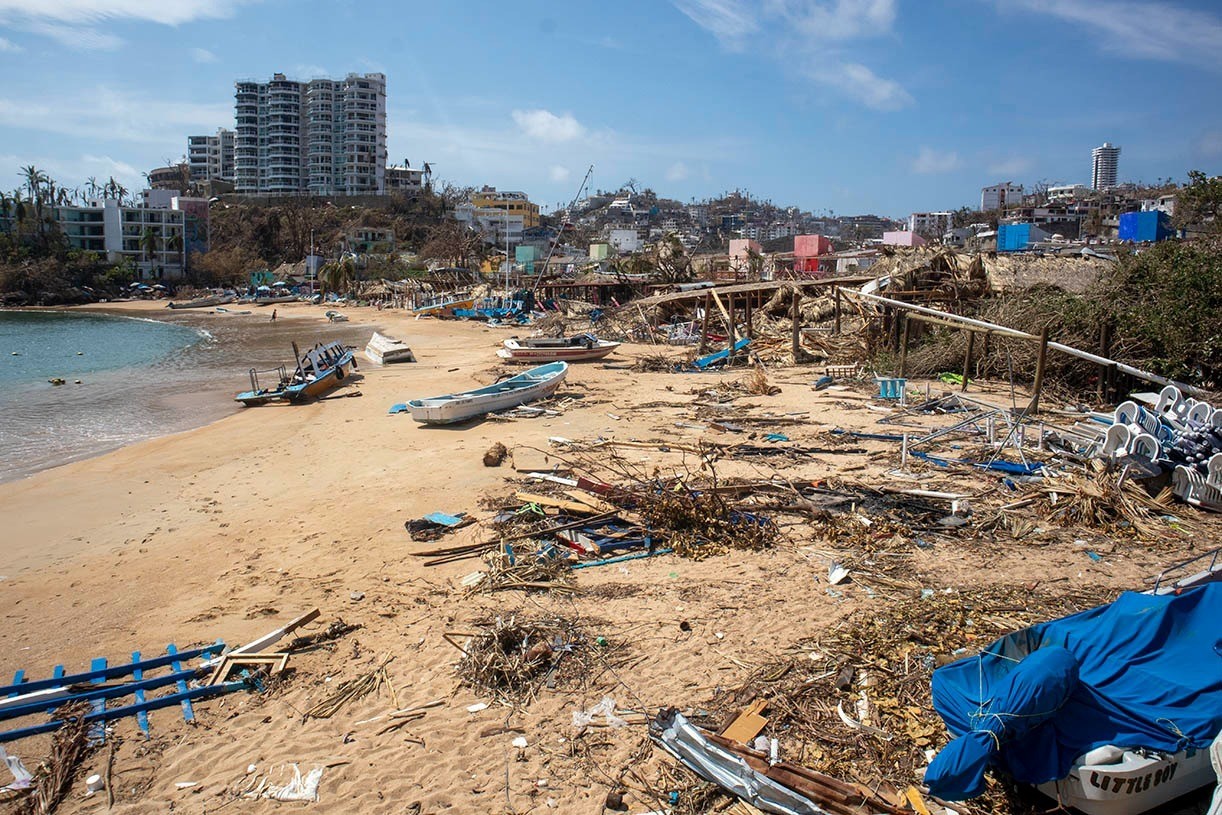
Not long after midnight, in the early morning of October 25th, 2023, the largest Pacific hurricane ever to make landfall touched down on the coast of Guerrero, Mexico, bringing with it 165mph winds, flooding rains, and devastation in its wake. In just 12 hours the tropical storm transformed into a category 5 hurricane, made possible by the multiple effects of climate change, including rising ocean temperatures in the Pacific.
The coastal city of Acapulco, with around one million inhabitants, took the brunt of the storm. For decades the city has been developed as a national and international tourist destination, organized politically, socially, economically, and spatially according to the interests of capital, and not local necessity or long-term sustainability. As such, many underlying problems that were already present in Acapulco and the surrounding areas were only magnified by the tremendous hurricane.
Many tourist development projects built right on the beaches and cliffs of the Pacific Ocean were destroyed by the pelting winds. The working class and popular neighborhoods on the peripheries of the tourist zones, with homes made of wood, sheet metal, and brick, were brought to ruins. Rising waters flooded the streets and homes with mud, debris, and trash, along with trees that had been ripped from the ground by the winds.
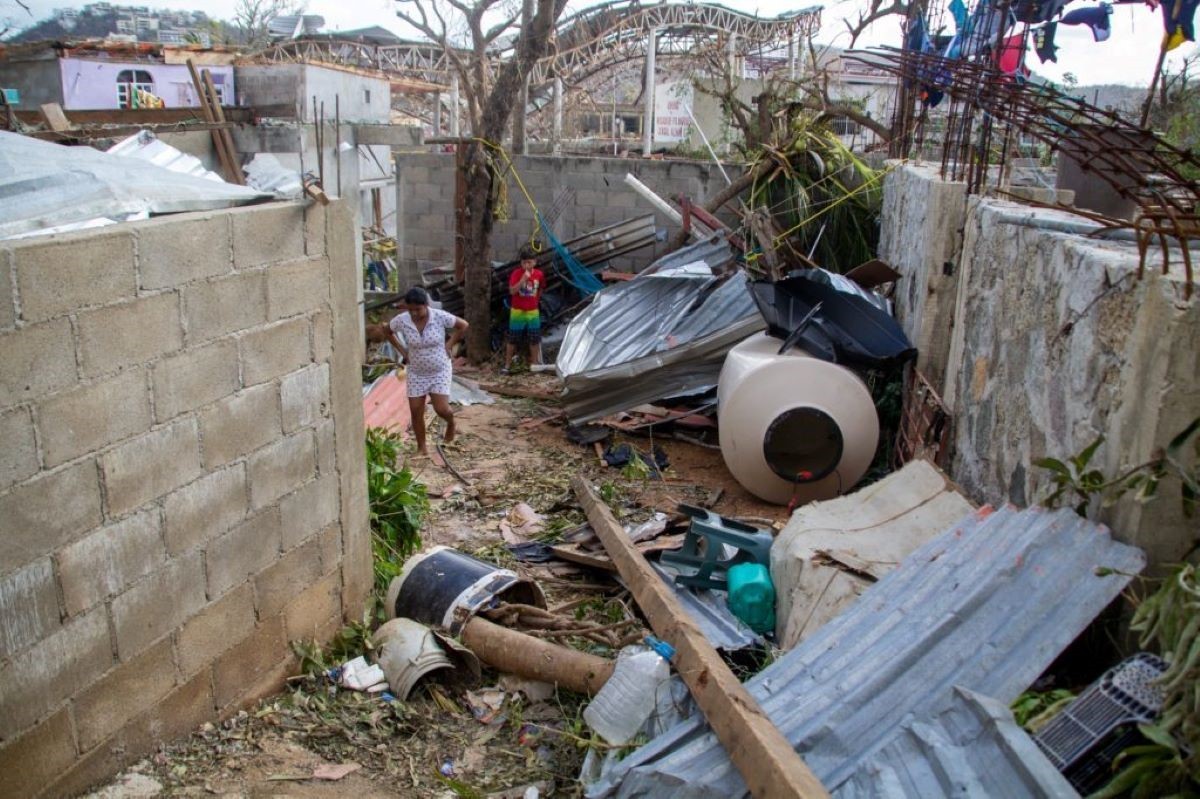
Photo: Oscar Guerrero/Amapola Periodismo
It wasn’t just Acapulco that was affected either. The government declared an emergency in 47 municipalities in the state of Guerrero, later reducing that number to two specific municipalities that were the most affected: Acapulco and Coyuca de Benítez. The communities pertaining to the agrarian nuclei of Cacahuatepec, part of the Consejo de Ejidos y Comunidades Opositoras a la presa La Parota (CECOP), reported serious damages to their homes and crops. Furthermore, the communities in the Montaña of Guerrero, one of the poorest regions in the state and country, reported the loss of crops, including coffee, bananas, and corn, all of pivotal importance for the alimentary and economic subsistence of the mostly Indigenous communities.
The hurricane left 48 dead, others remain missing, and the number of people affected are countless. Housing, businesses, roads, highways, and crops have all been destroyed. The stage had already been set for this disaster in Guerrero. Led by the forces of global capitalism, climate change, tourism, gentrification, and organized crime, Guerrero and Acapulco were already characterized by poverty, marginalization, insecurity, insufficient housing, and poor planning. With Hurricane Otis, these things were only exacerbated.
Capitalism is a Disaster
On October 23rd, just one day prior to Hurricane Otis making landfall in Guerrero, the 25th International Mining Convention was inaugurated in the Mundo Imperial Resort in the Punta Diamante tourist zone of Acapulco. The International Convention on Mining, considered the most important mining event in Mexico and Latin America, brings together mining corporations, businessmen, engineers, students, etc. every year to organize the future of the global mining industry. In a state plagued by mining exploitation the event being held every year in the state of Guerrero is not a coincidence.
The effects of mining have been catastrophic for many Indigenous and campesino communities in Guerrero, and have been a source of conflict between communities seeking to defend their territories and livelihoods on one hand, and companies seeking to extract massive profits from minerals in the earth on the other. The arrival of a Hurricane Otis just one day into the 25th International Convention on Mining; the destruction of the Mundo Imperial Resort where the convention was being held; and the forced cancellation of the event due to the extraordinarily powerful hurricane; together show the vicious interconnections between capitalism, mining, tourism, and climate change.
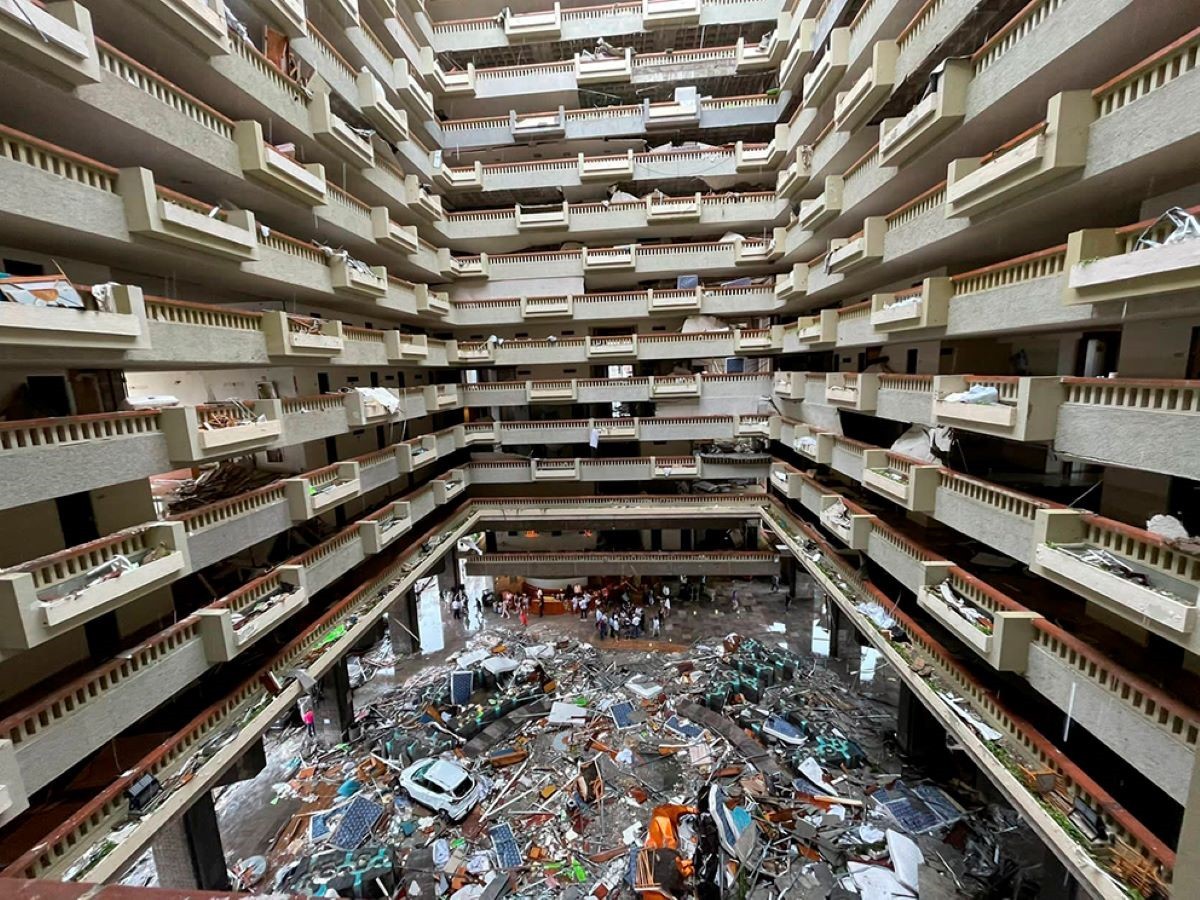
Princess Hotel after the hurricane. Photo: Amapola Periodismo
Just five days following the passing of the category five hurricane, on November 1st, while many people were still struggling for access to clean water and food, a group of businessmen and government officials led by Mexico’s richest man, Carlos Slim, met in Mexico City in the Museo Soumaya to discuss the situation in Acapulco. Others present at the event were Francisco Cervantes, the president of the Consejo Coordinador Empresarial (CCE), a representative body of the private sector in Mexico, Julio Carranza, the president of the Asociación de Bancos de Mexico (ABM), and José Abugaber, president of the Confederación de Cámaras Industriales (CONCAMIN). The intention of the meeting was to begin discussion on how to rebuild Acapulco, with a specific focus on the reactivation of the economy and the tourist industry in the port city.
On November 8th, Mexican President Andrés Manuel López Obrador led a meeting with these same figures, Carlos Slim and Francisco Cervantes, along with Antonio Cosio, CEO of Brisas Hotels and Resorts, and Juan Antonio Hernández, president of the Mundo Imperial Resort. Again, the discussion was the reconstruction of Acapulco, the tourist industry, and the reactivation of the economy. For them, the crisis caused by the hurricane is an opportunity for restructuring, reorganization, and most importantly, more profit.
In coordination with these businessmen, AMLO has promised to have at least 35 hotels open for business come April of next year, when the Tianguis Turistico is scheduled to take place in Acapulco. The Tianguis Turistico is a yearly gathering of corporations and companies from all different spheres of the tourist industry, one of the most important events related to the tourist industry in the country, solidifying Acapulco as an international tourist destination. The event is scheduled to be held at the Mundo Imperial Resort.
Militarization
The state of Guerrero has long been a site of extensive political resistance and militarization. The mountains of Guerrero were the center of operations of different guerrilla fighters in the mid to late 1900’s, and Guerrero too was an epicenter of the so-called dirty war in Mexico, where different organizers, activists, and social fighters were disappeared, tortured, and killed by state and para-state forces. Furthermore, Guerrero has long been an area for the cultivation of marijuana and opium. More recently it has become a battleground between rivaling drug cartels seeking to control trafficking routes, and the production of synthetic drugs. These different factors have led to the ongoing militarization of the state.
Prior to hurricane Otis, Guerrero was already one of the most militarized states in the country with 5,120 National Guard troops stationed there. With the passage of the hurricane, the president has sought to consolidate the militarization of the region. In the days following the storm, around 20,000 elements of the Army, Navy, Air Force, and National Guard were deployed to Acapulco to maintain order and facilitate relief efforts. The overwhelming presence of armed forces was partially a response to reports of looting in the city, as the local population lacked food, water, and other basic goods.
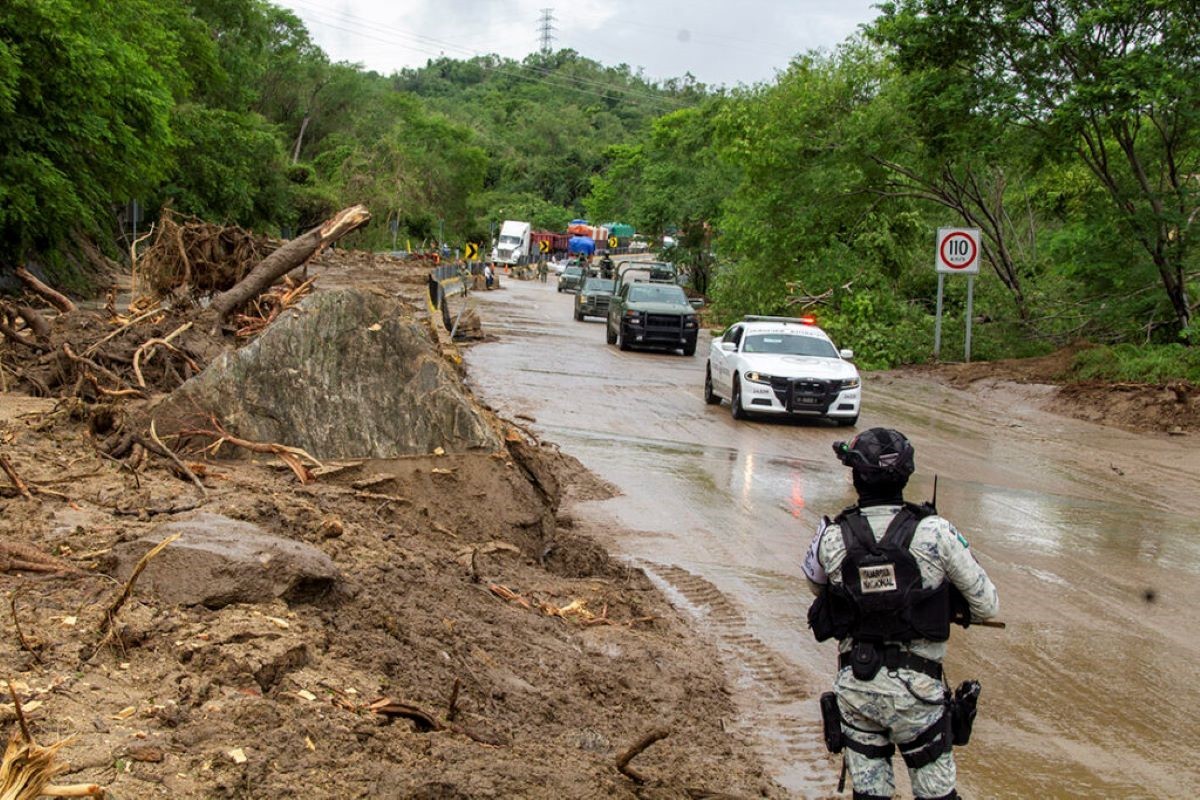
Photo: Amapola Periodismo
On November 7th, President Andrés Manuel López Obrador and the head of the Secretariat of National Defense Luis Cresencio Sandoval González announced the Security Plan to Armor the Municipality of Acapulco, with the intention of making permanent the presence of National Guard troops in Acapulco. The plan is to build 38 new national guard barracks, one in each residential area of Acapulco that exceeds 1,000 homes. With each barracks stationing 250 members of the national guard, there will be a permanent presence of nearly 10,000 national guard members in the municipality of Acapulco alone. This will make Guerrero by far the most militarized state in the country.
The stated intention of the militarization in Acapulco is to ensure security and the reconstruction of the port city. The more obvious reason is to protect major private interests, and insure the smooth functioning of capital into the future. And while security is the pretext, we know that the armed forces have been a source of insecurity in Guerrero and across the country, collaborating with organized crime in order to repress communities and movements in resistance. The case of the 43 disappeared students of Ayotzinapa, and the ongoing narco-paramilitary attacks on the communities of the Indigenous Popular Council of Guerrero—Emiliano Zapata (CIPOG-EZ) are just two examples.
Mutual Aid
While the state militarizes and capitalists profit off of this terrible disaster, collectives, communities, and organizations have responded with solidarity and mutual aid. The National Indigenous Congress (CNI) and the Zapatista Army of National Liberation (EZLN) launched a campaign on October 27th seeking economic and material donations for those affected by the hurricane. The communique signed by the National Indigenous Congress and the EZLN put the hurricane in context:
This hurricane is not an atypical phenomenon as the media and bad governments are framing it. It is a direct product of the destruction provoked by capitalism, by the ever-increasing damage caused by major corporations and government policies against our Mother Earth. What is atypical isn’t the hurricane. What is atypical is this violent system sustained by wars, pandemics, and the brutal exploitation and plundering of millions and millions of human beings and nature.
The site of collection for the campaign has been the House of the Peoples “Samir Flores Soberanes” in Mexico City—ex-offices of the National Institute for Indigenous Peoples (INPI) which was occupied by Indigenous Otomies demanding dignified housing, and has since become a center of resistance for Indigenous struggles throughout the country. On November 6th, a 12-ton truck was loaded with supplies at the House of the Peoples which was taken to Guerrero and delivered to the communities in need.
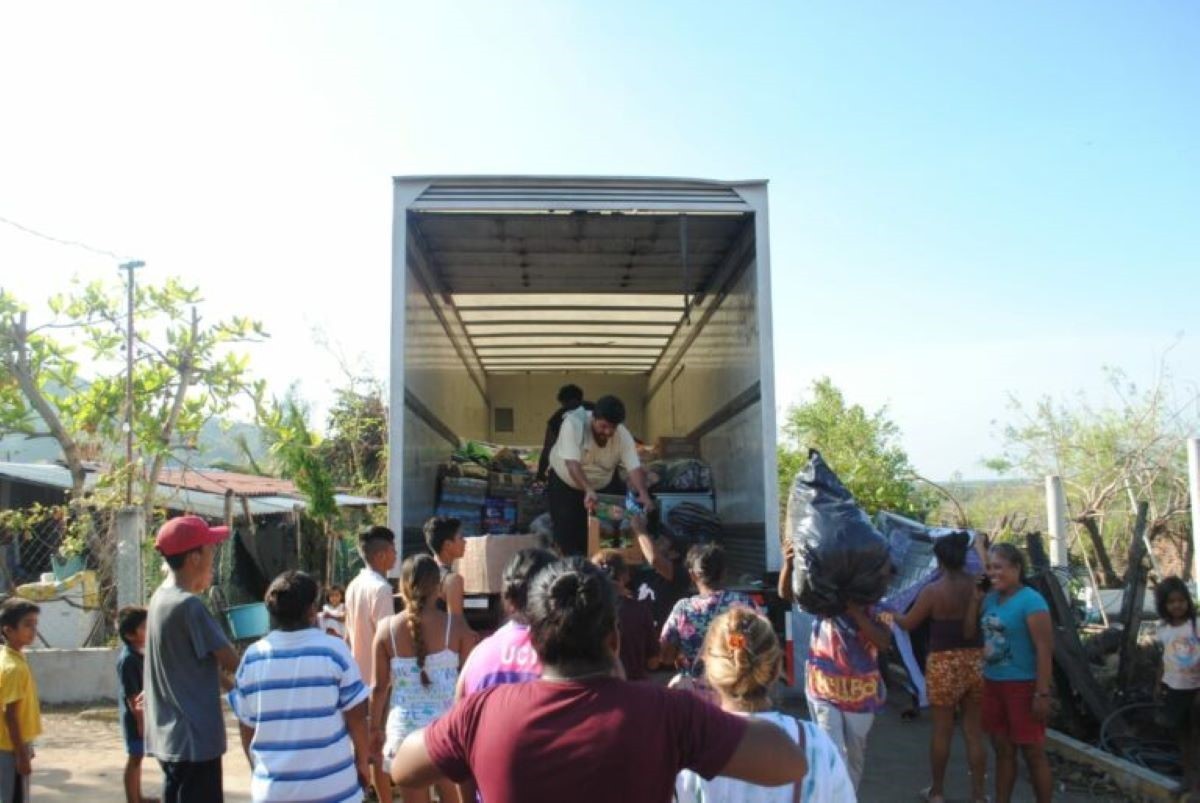
On October 31st, in an assembly of communities and ejidos pertaining to the Consejo de Ejidos y Comunidades Opositores a la Presa la Parota (CECOP), in the agrarian nuclei of Cacahuatepec, the decision was made to launch a campaign to help rebuild their communities. The communities and ejidos belonging to the CECOP have long organized and struggled in defense of the Papagayo river, against the construction of a hydroelectric dam, La Parota. The organizational forms already developed in resistance to the megaproject are now serving mutual aid efforts. In coordination with the Tlachinollan Human Rights Center, the communities are receiving sheet metal for roofing, and basic living supplies to support the communities in need.
Furthermore, the Organizacion Campesina de la Sierra del Sur (OCSS) is carrying out a toy drive for Indigenous children of Coyuca de Benitez, Guerrero, to bring smiles back to their faces as the organization has put it. The OCSS is another organization with a long history of resistance in Guerrero. They were the victims of the tragic massacre in Aguas Blancas on June 28th, 1995, where 17 campesinos were murdered and 23 others injured in an attempt to destroy the campesino movement in the region. More recently they have been fighting for the freedom of their long-term political prisoners.
Conclusion
Guerrero and Acapulco, before and after Hurricane Otis, are a microcosm of the realities being faced throughout much of Mexico, Latin America, and the world. While Hurricane Otis has been a disaster, Guerrero was already inundated by a multiplicity of disasters: colonialism, capitalism, militarization, climate change, state and organized crime violence, etc.
Yet, Hurricane Otis has also brought to light alternatives to these disasters; alternatives that exist in the everyday lives of the communities, and that become more visible in extraordinary times of need. That is the strength of cooperation, mutual aid, and solidarity. It is that strength that animates other possible futures, ones grounded in community and regional self-organization from below, as opposed to the multiplicity of disasters which characterize our modern world.




